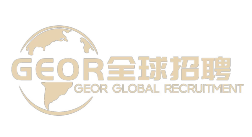Overseas local talent recruitment: unlock new momentum of global business growth
Overseas local talent recruitment: unlocking new momentum for global business growth
Driven by the wave of globalization, enterprises to expand overseas markets has become an important strategy to achieve sustainable growth. However, the cross-cultural and cross-regional operation mode poses a new challenge to talent management. How to efficiently recruit and integrate overseas local talents has become a key factor for enterprises to gain a firm foothold in the target market. This paper will analyze the core logic and practical path of overseas talent recruitment from the three dimensions of strategic planning, cultural adaptation and recruitment channels.
1. precise positioning: from business needs to talent portrait
The first task of overseas recruitment is to determine the matching degree between job needs and local market. For example, when manufacturing companies enter the Southeast Asian market, they need to give priority to technical personnel who are familiar with local supply chain resources; and when Internet companies explore the European and American markets, they need to have design and operation teams with product localization thinking. By analyzing the industry ecology, policies and regulations and consumption habits of the target market, enterprises can build a two-dimensional talent portrait of "skills + culture" to avoid water and soil disobedience caused by blind recruitment.
when a new energy enterprise entered the german market, it trained engineers who met the german industrial 4.0 standard six months in advance through cooperation with local vocational training institutions, which not only solved the problem of language barrier, but also ensured the seamless connection of technical standards, and finally achieved a 40% increase in capacity climbing speed.
2. cultural integration: deep connection beyond language barriers
The core challenge of overseas recruitment is cross-cultural management. Enterprises need to establish a "cultural adaptation evaluation system" to examine the candidates' cross-cultural collaboration ability through scenario simulation, behavioral interviews and other methods in the interview process. For example, when Japanese companies entered the Brazilian market, they had a high turnover rate due to excessive emphasis on hierarchical systems. Later, by introducing a flat management model and setting up a multicultural committee, they successfully increased the employee retention rate to 1.5 times the industry average.
In addition, localized benefit design is equally important. Middle Eastern companies have significantly improved employee satisfaction by providing detailed care such as halal canteens and flexible prayer times, while Nordic companies have adopted flexible work systems and mental health support, which are in line with the social and cultural characteristics of the local high happiness index.
3. channel innovation: building a three-dimensional talent reach network
traditional recruitment websites have limited coverage in overseas markets, and enterprises need to integrate diversified channels:
- Industry ecological cooperation : establish talent pipeline with local universities and industry associations. By sponsoring the Indian Medical Summit, a medical equipment company directly reached more than 200 Junior College doctors, 35% of whom were converted to core R & D team members.
- Social media operations : use LinkedIn, Facebook and other platforms to build employer brands. A cross-border e-commerce company has gained more than 500000 interactions by releasing a series of short videos of "Diary of Foreign Employees Working in China", naturally attracting a large number of high-quality candidates.
- Employee recommend Plan : Set up a ladder reward mechanism to stimulate the social network value of existing overseas employees. In this way, a logistics company shortened the recruitment cycle of its Brazilian branch from 3 months to 6 weeks.
Long-term 4. training: from "employment relationship" to "value community"
The management of overseas talents needs to break through short-term employment thinking. An automobile manufacturer designed a "dual tutorial system" for a Mexican factory. Each new employee is equipped with a technical mentor and a cultural mentor. The first 3 months focus on skills training, and the next 3 months participate in cross-departmental projects, shortening the output cycle of new employees by 50%. At the same time, establish a clear promotion channel and rotation mechanism to allow local employees to see the possibility of career development, thereby reducing the risk of core brain drain.
The essence of global competition is talent competition. Companies need to restructure their recruitment logic with an open mind and treat overseas talent as a strategic resource rather than a cost item. By accurately positioning needs, deepening cultural understanding, innovating recruitment methods, and improving the training system, we can build a difficult-to-replicate talent barrier in the international market and inject lasting momentum into business growth.
